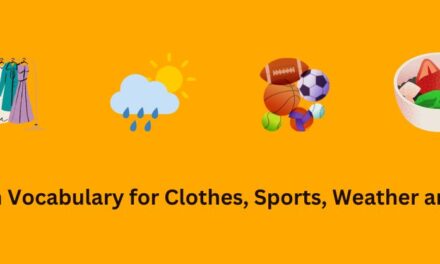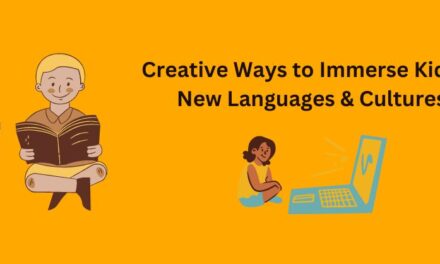How Language Barriers Undermine Immigrant Futures

Moving to a new country is a massive transition full of challenges. One of the most significant hurdles facing immigrants across the globe is adapting to a new predominant language.
The Far-Reaching Impact of Language Barriers on Immigrants
Not speaking the primary language used in their new communities can have wide-ranging negative consequences for immigrants economically, socially, academically, and in terms of access to healthcare.
Understanding the complex effects of language barriers on immigration populations is key to creating better support systems and integrating immigrant communities more fully. With smart policies and compassionate initiatives, societies can turn language diversity into a bridge rather than a barrier.
Economic Obstacles for Immigrants From Language Differences
Gaining financial stability in a new homeland with unfamiliar languages presents a multidimensional struggle. While all immigrants face difficulties getting their footing in new labor and financial systems, those without strong skills in the local language tend to face even tougher economic challenges.
Fewer Job Opportunities Without Local Language Skills
One of the first steps for any new immigrant is finding work. However, limited local language proficiency severely restricts the jobs available. While some opportunities exist in immigrant communities or through hiring managers from similar backgrounds, the vast majority of jobs require fluency.
This filters immigrants out of higher-skilling, higher-paying jobs, relegating them to low-wage manual labor, service industry, or informal sectors regardless of their experience, education, or abilities.
Doctors, lawyers, scientists, teachers, and other professionals immigrating without strong local language abilities find their expertise discounted. Policy changes to fund rapid professional re-certification programs in multiple languages could help alleviate this hurdle that squanders immigrant’s human capital.
Lower Wages Due to Language Disadvantage
Immigrants who are not fluent in the local language consistently earn lower wages than equally experienced native speakers. Some unethical employers exploit immigrants’ lack of language fluency to justify illegally low wages. Without the language ability to assert their rights or seek better opportunities, immigrants become trapped earning significantly less than their native counterparts.
Studies show non-fluent immigrants suffer a 5-15% wage gap compared to native speakers in the same jobs. This wage gap often persists even after accounting for education level, work experience, and other factors. Language confer economic power, and without it, immigrants lose earning potential. Stronger enforcement against wage theft and discrimination could combat this trend.
Heightened Risk of Workplace Exploitation
The combination of language barriers and immigrant status leaves many vulnerable to workplace exploitation. Limited language skills make it harder to be aware of labor rights, safety standards, or report unsafe conditions. Traffickers often seize on language barriers as a way to coerce and control victims.
Underground industries like garment sweatshops also often target immigrant workers with limited English. The lack of fluency prevents workers from leaving or reporting abuses. Tighter regulation of industries that rely on immigrant labor could help reduce these risks of exploitation.
Financial Systems Become Labyrinths Without Shared Language
Navigating daily life in a new language takes immense effort. Mundane tasks like opening a bank account, getting a driver’s license, taking out a loan, signing a lease or mortgage, and paying taxes become herculean. The financial system grows into a maze of incomprehensible bureaucracy without language fluency.
Confusion over financial requirements leads many immigrants to miss out on beneficial programs or opportunities. Local governments could better serve immigrant residents by translating documents, forms, and providing multilingual assistance programs to facilitate financial inclusion.
Language Walls Can Stymie Entrepreneurship
Starting a new business requires clearing major regulatory and paperwork hurdles. Reaching potential customers and clients to build a clientele also presents a monumental language barrier without fluency. Even accessing business financing can be obstructed by language gaps. These obstacles stifle immigrant entrepreneurship and business innovation.
Providing accessible multilingual business training courses could help unlock immigrant entrepreneurial ambitions. Stronger language assistance and translation services facilitated through local business groups may also aid budding business owners. Removing language obstacles provides a path for immigrants’ diverse talents and drive to contribute to economic dynamism.
Social Costs of Language Disconnects Between Immigrants and New Communities
Beyond economic impacts, lack of shared language also inflicts social wounds on immigrants. Humans are inherently social creatures, but common tongues facilitate connection.
Language barriers inhibit community building, contribute to isolation, and can breed discrimination. Mental health often suffers without the sense of belonging and support that comes from integration.
Loneliness and Social Isolation
A shared language facilitates making friends, finding belonging in community groups, communicating with neighbors, and building social connections. Without the ability to converse fluently, immigrants often feel detached and lonely, unable to break into social circles or forge local bonds. This isolation takes a psychological toll, leading to depression and other mental health maladies.
Cities and community organizations can design programs to proactively welcome immigrants and build cultural bridges. Multilingual events with shared activities rather than depending on language can also nurture connections. Reducing isolation will require recognizing non-fluent immigrants need help finding their tribe.
Family Relationship Strains from Language Gaps
One paradoxical dynamic that emerges in immigrant families is the reversal of roles due to language fluency gaps between generations. Children often pick up new languages much faster than older family members through school immersion. This can invert the traditional family hierarchy.
Kids and teens may take on translator roles for parents or excessive autonomy due to their superior language abilities. This language gap can damage family relationships, stoke intergenerational conflicts, and lead parents to feel disconnected from their children’s lives. Supporting multigenerational language programs could mitigate these familial strains.
Perceived Discrimination from Impatient Natives
Discrimination exists in all societies, but immigrants often feel particularly scrutinized for language fluency. Shopkeepers, government workers, employers, teachers, and others often exhibit far less patience when communicating with immigrants compared to native speakers.
Feeling pressured and looked down on fuels perceptions of discrimination and being unwanted. Kindness campaigns focused on allowing grace periods for non-native speakers learning the language could help combat this discrimination. Immigration goes smoother when immigrants feel respected.
Marginalization from Mainstream Social Circles
Language is core to cultural identity. The inability to converse smoothly prevents immigrants from making local friends, navigating leisure activities, and connecting with community groups. This marginalization from mainstream social networks further hampers assimilation to the local culture.
Providing accessible social programs from rec sports leagues to book clubs specifically welcoming immigrant participation could aid social integration. Social engagement is key to finding fulfillment in a new home.
Losing Vital Information Without Local Language Fluency
From newspapers to social media to utility bills, language poses barriers to accessing crucial information for daily life. Information is power, but non-fluent immigrants miss out on news and notifications native speakers take for granted. This disconnect from current events and local happenings further isolates immigrants.
Cities can help bridge these information gaps by offering multi-language versions of public announcements, services, emergency notifications, and event calendars. Digital information platforms also provide options to reach non-native speakers if designed intentionally.
How Language Barriers Undermine Immigrant Students’ Education
For immigrant children and students trying to adapt to new school systems, lack of language fluency becomes a major impairment.
Language barriers lead to achievement gaps, social disconnection, and long-term limitations on academic potential. Supportive educational policies and understanding from schools could help immigrant students thrive.
Widening Achievement Gaps For Non-Native Speakers
On virtually all academic metrics from test scores to graduation rates, students lacking strong foundational language skills lag behind native speakers. They struggle to comprehend material delivered without language adaptations across all subjects. As the material progresses, the gap often widens over time.
School systems seldom have enough bilingual staff and educational programs to foster immigrant student success. Providing trained language specialist educators, tutoring resources, and age-appropriate academic material in diverse languages could begin closing these achievement gaps.
Fewer Educational Opportunities For Non-Fluent Students
Limited language abilities restrict access to advanced classes, academic tracks leading to college, standardized testing, scholarships, and post-secondary enrollment. Without fluency, immigrant students cannot understand lessons or complete application processes. Their academic ceilings become artificially lowered.
Policy solutions like test translations, multilingual college counseling, and mentoring programs to encourage immigrant students towards higher education could expand opportunities. Immigration often motivates big dreams; education systems must nurture those dreams equally across languages.
Living Between Dual Cultures and Languages
Immigrant youth straddle two cultures, forced to navigate complex bicultural identities. School is often their primary conduit for local cultural immersion while home retains traditions of their origin. This delicate balancing act is made more treacherous without a unifying language bridging their communities.
Schools that proactively teach immigrant students about local culture, soften tensions between families, and celebrate cross-cultural fluency can ease this burden. Promoting a school community that treats language diversity as valuable rather than a mere obstacle would benefit these students.
Social Exclusion Without Shared Language Between Peers
A huge portion of school life is social interaction with peers – forming friendships, bonding over lessons, finding camaraderie through extracurricular activities. But this dimension is profoundly limited when students lack a fluency in the predominant school language.
Even in diverse school environments, language differences reinforce social divides. Providing opportunities specifically for intercultural friendship could mitigate exclusionary tendencies. Language learning buddy systems could also build supportive social bonds across immigrant-native speaker lines.
Lasting Effects of Early Language Barriers
The foundational years of schooling are critical periods for language development. When this development is thwarted by lack of language access in academic settings, effects can persist long term. Without early intervention, immigrant students may perpetually struggle even after gaining basic fluency.
Policymakers must recognize the value of early language integration programs in schools. Bilingual education, reading support, speech therapy, and other services tailored to young immigrant students can prevent compounding disadvantage due to initial language barriers.
Unequal Access to Healthcare Driven by Immigrants’ Language Needs
Navigating healthcare systems is confusing in any language. But for immigrants without local fluency, the complexity becomes dangerously magnified.
From communicating symptoms to understanding prescriptions, language gaps lead to medical risks, discrimination, and systemic dependence on emergency rooms. Compassionate solutions exist but require implementation.
Elevated Medical Risks When Healthcare Language Needs Unmet
Without reliable communication, immigrants often delay seeking care. Chronic health conditions go unmanaged. In medical settings, they may inadequately convey concerning symptoms out of vocabulary limitations. Untrained interpreters risk dangerous mistranslations.
This collision of language barriers and healthcare communication can literally be a matter of life or death. Hospital systems must invest in extensive interpreter training, on-call translation services by phone, and accessibility measures for non-native speakers. No one should suffer medical risk due to language alone.
Misdiagnoses and Mistreatment Linked to Language Disconnects
Even with translation assistance, communicating subtle health details often gets muddled between providers and patients without fluency. This increases odds of misdiagnosis, inappropriate treatments, and prescription errors. Already fearful of doctors, language hurdles exacerbate medical distrust.
Expanding medical vocabulary training for interpreters could increase precision. Standardizing systems to indicate patients’ exact language needs in their file may also prevent misfires. Simple solutions like pictographic prescription instructions demonstrate linguistic compassion.
Preventative Care Falls Behind Without Proactive Language Access
Basic healthcare like annual checkups, important health screenings, reproductive care, pediatric visits, dental cleanings, vision tests, and vaccinations all hinge on language comprehension. Without proactive information in their language, many immigrants miss out on vital preventative care.
Community health organizations must do intentional outreach to spread preventative care information to immigrant communities in on-the-ground education campaigns tailored language-wise. Preventative care is difficult enough to understand even with language fluency.
Mental Health Needs Multiplied for Immigrants – But Support Lags
Migration inherently brings psychological stressors like culture shock, isolation, and identity struggles. Language barriers multiply mental health burdens for immigrants but accessing care becomes far harder without fluency. Mental illness remains obscured, stigmatized, and untreated in immigrant groups.
Mental healthcare desperately needs more multilingual counselors and therapists equipped to address immigration-related stress. Group therapy mixing languages may also help immigrants connect and realize they are not alone in mental health struggles.
Over-Reliance on Emergency Rooms Due to Language Access Barriers
Lacking options to understand doctors’ instructions or make regular appointments effectively, many immigrants turn to hospital emergency rooms as primary care. Legally ERs cannot refuse patients due to language. But dependence on ERs for routine needs strains the healthcare system.
Policy solutions like covering trained interpreter services for immigrant patients, language-concordant community clinics, and multilingual preventative care outreach could alleviate ER over-reliance. Healthcare works better when it works equitably for all.
Ways Society Can Address Immigrant Language Barriers
While language barriers present imposing challenges for immigrants across economic, social, educational, and healthcare spheres, solutions exist to lower these hurdles. Both government and community organizations have constructive roles to play in easing immigrants’ transition burdens.
Here are some promising directions:
Fund wider access to English language learning programs. Classes in the local language at beginner to advanced levels are essential but often have long waitlists. Creative funding can expand capacity and access.
Train more medical interpreters and translators. Accurate medical communication must have trained interpretation, not ad hoc bilingual staff. Hospitals and clinics should prioritize qualified interpreter hiring and training.
Translate governmental materials into diverse languages. Local governments must provide documents and communications multilingually. Census language assistance helps demonstrate possibilities.
Recruit more bilingual staff in schools, hospitals, and legal/social services. Bilingual employees provide immense value as liaisons to break language divides. Agencies must incentivize bilingual hires.
Provide programs welcoming immigrant parents into schools. Outreach to demystify school processes and provide language learning resources to parents can ease familial strains.
Develop easy online translation tools and free language learning apps. Technology can break language barriers more seamlessly. Simple user-friendly tools should be widely accessible.
Offer cultural competency and implicit bias training to agencies serving immigrants. Well-meaning institutions can still project discrimination. Training and feedback are key.
Regulate industries with histories of immigrant worker exploitation. Agencies must monitor wages, conditions, and labor law compliance to protect vulnerable workers.
Hold property managers accountable for translating leases and rules. Immigrants struggle finding safe equitable housing without language access. Enforce multilingual rental requirements.
Provide free multilingual tax prep assistance. Navigating tax systems is bewildering enough in one’s native language. Tax help centers and translated IRS guides ease burdens.
Support multilingual domestic violence intervention services. Seeking help is exponentially harder for abuse survivors without language abilities. Outreach requires cultural nuance.
Promote language learning apps and intercultural friendship building. Digital solutions and social events can catalyze organic language sharing outside formal classroom settings.
Celebrate bilingualism and diverse immigrant languages in schools. Treat multilingualism as an asset. Foster immigrant pride and cross-cultural exchange through flexible language policies.
Fund adult language immersion programs combining childcare. Parents need language skills but struggle to attend classes without childcare. Creative solutions can unlock learning.
Aiding immigrants with compassion breaks barriers. We must meet language needs with empathy and innovation.
Conclusion: Turning Language Diversity Into Community Assets
Language diversity is often treated as an automatic wedge between immigrant groups and native-born communities. But with thoughtful policies and support systems, multilingual abilities can become assets rather than obstacles. Equipping immigrants to learn and preserve local languages while retaining their mother tongues enriches entire communities.
Providing immigrants access to education, economic opportunities, healthcare, and social inclusion regardless of initial language skills demonstrates compassion.
An immigrant’s worth is not defined by accent or grammar. All deserve chances to positively engage and contribute.
Creating an open culture that values diverse languages and treats non-fluent speakers with patience paves the way. With the right assistance and receptive communities, immigrants can adopt local languages without losing their identities.
The sounds of our diverse voices combine to make society’s chorus richer. Through understanding language barriers’ impacts, we take the first step toward dismantling them.












